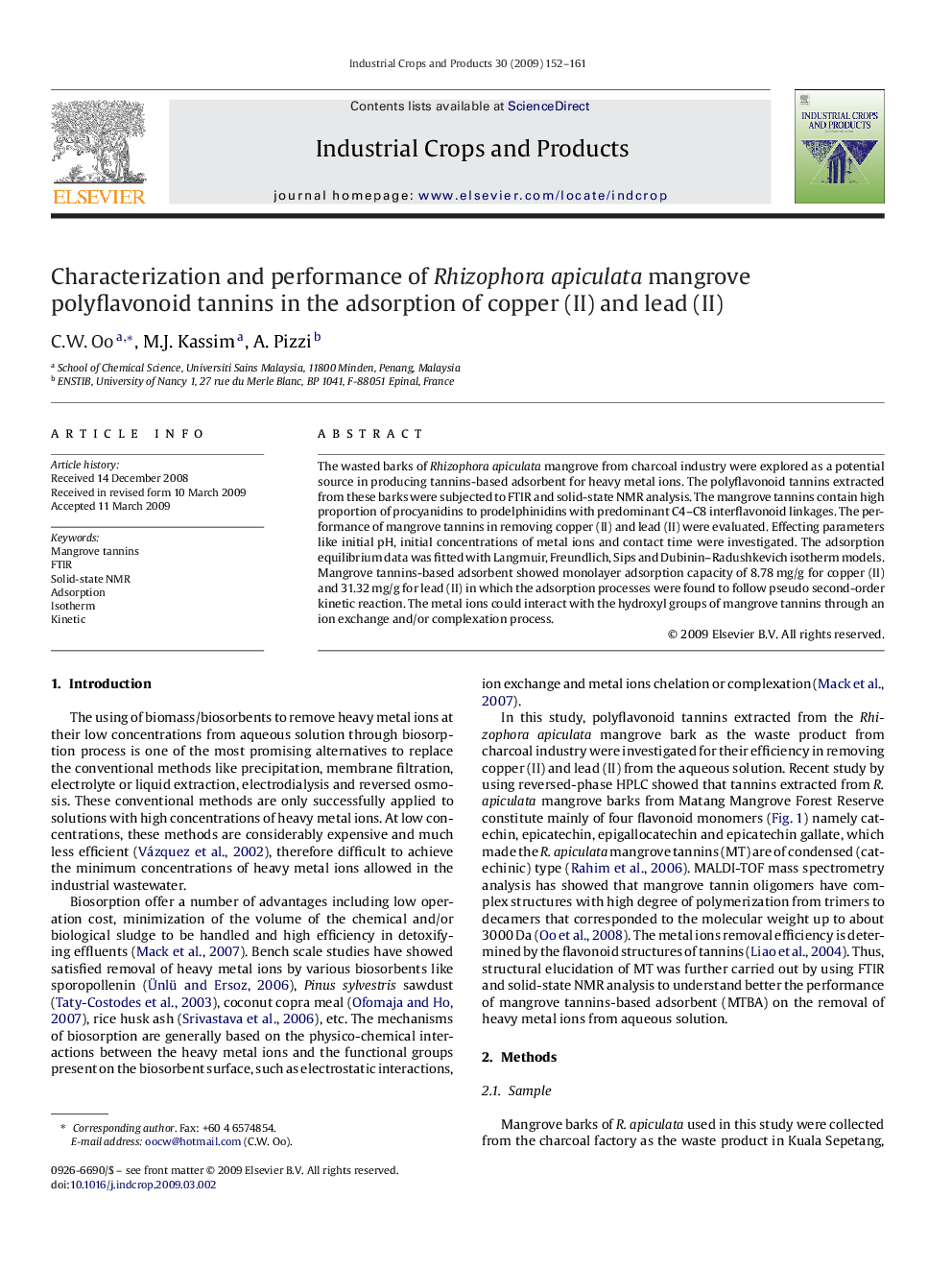| Article ID | Journal | Published Year | Pages | File Type |
|---|---|---|---|---|
| 4514942 | Industrial Crops and Products | 2009 | 10 Pages |
The wasted barks of Rhizophora apiculata mangrove from charcoal industry were explored as a potential source in producing tannins-based adsorbent for heavy metal ions. The polyflavonoid tannins extracted from these barks were subjected to FTIR and solid-state NMR analysis. The mangrove tannins contain high proportion of procyanidins to prodelphinidins with predominant C4–C8 interflavonoid linkages. The performance of mangrove tannins in removing copper (II) and lead (II) were evaluated. Effecting parameters like initial pH, initial concentrations of metal ions and contact time were investigated. The adsorption equilibrium data was fitted with Langmuir, Freundlich, Sips and Dubinin–Radushkevich isotherm models. Mangrove tannins-based adsorbent showed monolayer adsorption capacity of 8.78 mg/g for copper (II) and 31.32 mg/g for lead (II) in which the adsorption processes were found to follow pseudo second-order kinetic reaction. The metal ions could interact with the hydroxyl groups of mangrove tannins through an ion exchange and/or complexation process.
